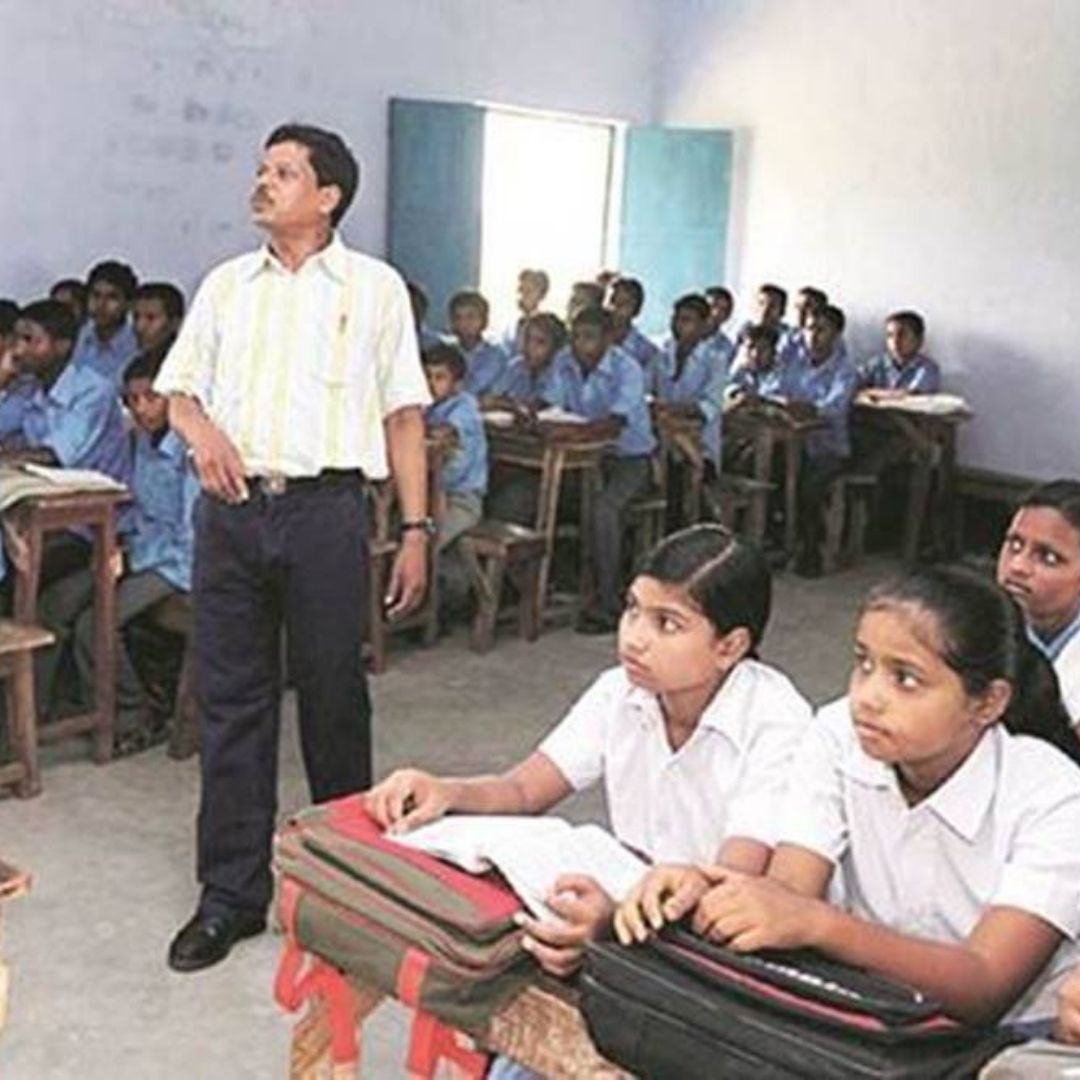
Image Credit: The Indian Epress
India Short of 11.16 Lakh Teachers, Says UNESCO Report
Writer: Nida Fatima
Nida Fatima is enrolled in Guru Gobind Singh Indraprastha University, New Delhi. She has done her Bachelors in Science and now she is pursuing Master’s in Mass Communication. She is an effective communicator aspiring to be a journalist with conscience, clarity, reason and balance.
India, 6 Oct 2021 2:31 PM GMT | Updated 6 Oct 2021 3:18 PM GMT
Editor : Madhusree Goswami |
A mountain girl trying to make it big in the city. She loves to travel and explore and hence keen on doing on-ground stories. Giving the crux of the matter through her editing skills is her way to pay back the journalism its due credit.
Creatives : Nida Fatima
Nida Fatima is enrolled in Guru Gobind Singh Indraprastha University, New Delhi. She has done her Bachelors in Science and now she is pursuing Master’s in Mass Communication. She is an effective communicator aspiring to be a journalist with conscience, clarity, reason and balance.
The findings in the report, 'State of the Education Report for India-2021', focused on teachers, are largely based on analysis of Periodic Labour Force Survey (PLFS) and the Unified District Information System for Education (UDISE) data.
On Tuesday, October 5, UNESCO released a report according to which India has nearly 1.2 lakh single-teacher schools of which 89 percent are in rural areas. The report projects that India needs 11.16 lakh additional teachers to meet the current shortfall.
The report, 'State of the Education Report for India-2021', focused on teachers. It is primarily based on analysis of Periodic Labour Force Survey (PLFS) and the Unified District Information System for Education (UDISE) data. The collaboration of a team from Tata Institute of Social Sciences, Mumbai, led by Prof Padma M Sarangapani with UNESCO, worked well to complete this report.
Based on PLFS 2018-19 data calculations, the report points out that there are 1,10,971 single-teacher schools across states, which translates to 7.15 per cent of 11.51 lakh schools, employing 95 lakh teachers. "89 percent of these single-teacher schools are in rural areas. States with a high percentage of single-teacher schools include Arunachal Pradesh (18.22 percent), Goa (16.08 percent), Telangana (15.71 percent), Andhra Pradesh (14.4 percent), Jharkhand (13.81 percent), Uttarakhand (13.64 percent), Madhya Pradesh ( 13.08 percent), Rajasthan (10.08 percent)," the report states.
Sustainable Development Goal
Education is one of the 17 sustainable development goals (SDG), its betterment is the collective responsibility. Tripura has the least number of women teachers (32 per cent), followed by Assam, Jharkhand and Rajasthan (39 per cent). Chandigarh leads the chart with 82 per cent, followed by Goa (80 per cent), Delhi (74 per cent), and Kerala (78 per cent).
According to the analysis, "The proportion of women teachers in rural locations is less than that in urban locations. In rural areas, 28 percent of primary school teachers are women versus 63 percent in urban areas. However, early childhood education teachers are predominantly women, and 88 percent are in rural areas. At the secondary school level, 24 percent of teachers in rural areas are women, versus 53 percent in urban locations."
The proportion of teachers employed in the private sector grew from 21 per cent in 2013-14 to 35 per cent in 2018-19. It said the requirement of teachers in these schools fell by 10 per cent, as against 6 per cent in government schools.
Also Read: No, This Viral Image Is Not Of Yogi Adityanath's Elder Brother
 All section
All section














